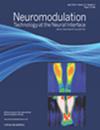脊髓刺激对慢性疼痛患者睡眠障碍的改善与疼痛缓解无关吗?一项探索性观察研究。
IF 3.2
3区 医学
Q2 CLINICAL NEUROLOGY
引用次数: 0
摘要
目的:慢性疼痛是全球面临的一项重大健康挑战,与残疾和生活质量下降有关。据报道,67% 到 88% 的慢性疼痛患者存在睡眠障碍。疼痛和睡眠相互影响;我们旨在研究脊髓刺激(SCS)治疗慢性疼痛患者的这种双向关系。具体来说,我们研究了接受脊髓刺激治疗后睡眠是否会改善,以及这种改善是否会因疼痛减轻而起作用:我们在丹麦的一个神经外科部门对接受 SCS 治疗的慢性神经病理性疼痛患者进行了一项观察性队列研究。研究结果在术前、术后 3 个月、6 个月和 12 个月进行评估,此后每年评估一次。主要结果是疼痛强度(数字评分量表)和首次随访时的失眠情况(失眠严重程度指数)。通过线性回归和中介分析研究了睡眠与疼痛之间的关系:研究共纳入 43 名患者。平均失眠评分降低了 25%,从 18.1(标清 6.0)降至 13.5(标清 6.6)(p = 0.0001)。首次随访时,疼痛强度降低了 38%,从 7.4(标准差 1.6)降至 4.6(标准差 2.1)(p ≤ 0.0001)。疼痛评分的变化与失眠评分的变化有显著但微弱的相关性(回归系数 = 1.3,95% CI [0.3;2.2],p = 0.008,r2 = 15.7%);未发现疼痛评分的变化会介导睡眠评分的变化(β = -0.02,95% CI [-0.15;0.11],p = 0.76):我们发现,接受 SCS 治疗的患者在首次随访时,失眠和疼痛强度均有显著改善。失眠和疼痛强度的改善有明显但微弱的相关性,疼痛强度评分的改善并不影响失眠评分的改善。因此,接受 SCS 治疗的慢性疼痛患者自我报告的失眠情况有所改善,可能主要是由疼痛强度降低以外的其他因素造成的。本文章由计算机程序翻译,如有差异,请以英文原文为准。
Does Spinal Cord Stimulation Improve Sleep Disturbances Independently of Pain Relief in Patients With Chronic Pain? An Explorative, Observational Study
Objectives
Chronic pain poses a significant health challenge worldwide and is associated with both disability and reduced quality of life. Sleep disturbances are reported in 67% to 88% of patients with chronic pain.
Pain and sleep affect each other reciprocally; we aimed to study this bidirectional relationship in patients treated with spinal cord stimulation (SCS) for chronic pain. Specifically, we investigated whether sleep improves after treatment with SCS and whether this improvement may be mediated by pain reduction.
Materials and Methods
An observational cohort study was conducted in patients with chronic neuropathic pain treated with SCS at a single neurosurgical department in Denmark. Outcomes were assessed preoperatively and at three, six, and 12 months postoperatively, and thereafter annually. Primary outcomes were pain intensity (numeric rating scale) and insomnia at first follow-up (Insomnia Severity Index). The association between sleep and pain was investigated using linear regression and mediation analysis.
Results
Forty-three patients were included in the study. The mean insomnia score was reduced by 25% from 18.1 (SD 6.0) to 13.5 (SD 6.6) (p = 0.0001). Pain intensity was reduced 38% from 7.4 (SD 1.6) to 4.6 (SD 2.1) at the first follow-up (p ≤ 0.0001). Changes in pain and changes in insomnia scores were significantly but weakly associated (regression coefficient = 1.3, 95% CI [0.3; 2.2], p = 0.008, r2 = 15.7%); and changes in pain score were not found to mediate changes in sleep score (β = −0.02, 95% CI [−0.15; 0.11], p = 0.76).
Conclusions
We found that patients treated with SCS showed significant improvements in both insomnia and pain intensity at first follow-up. Improvements in insomnia and pain intensity were significantly but weakly associated, and improvements in pain intensity score did not mediate improvements in insomnia score. Thus, improvements in self-reported insomnia in patients treated with SCS for chronic pain may predominantly be caused by other factors than reduced pain intensity.
求助全文
通过发布文献求助,成功后即可免费获取论文全文。
去求助
来源期刊

Neuromodulation
医学-临床神经学
CiteScore
6.40
自引率
3.60%
发文量
978
审稿时长
54 days
期刊介绍:
Neuromodulation: Technology at the Neural Interface is the preeminent journal in the area of neuromodulation, providing our readership with the state of the art clinical, translational, and basic science research in the field. For clinicians, engineers, scientists and members of the biotechnology industry alike, Neuromodulation provides timely and rigorously peer-reviewed articles on the technology, science, and clinical application of devices that interface with the nervous system to treat disease and improve function.
 求助内容:
求助内容: 应助结果提醒方式:
应助结果提醒方式:


